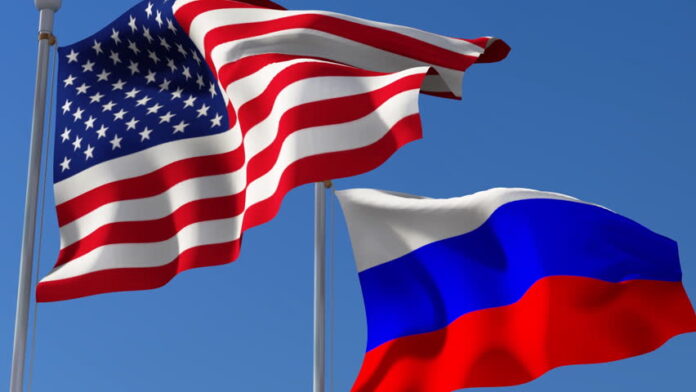The USA initially ignores its opponents, but as tensions rise it overemphasizes the threats of their capabilities. It has been doing the same in relation to China. Geographic distance continues to foster a sense of security and increased connectivity, but this sense creates a tendency for Americans to understand their adversaries more or less. As the USA grows closer to China, it increasingly portrays China as a dangerous country and increases military spending much to counter the perceived threat. While China’s geographical location is of utmost importance, on the other hand, China also continues to avoid direct combat.
A resurgence of Russia now poses a challenge to the USA as Russia exerts influence in Central Asia and the Caucasus and also threatens to absorb Moldova. However, it could not fulfill its dream of annexing the Baltic States or dominating any nation in the West.
If Russia engages with the Baltic States and secures important allies in Central European countries such as Serbia, Bulgaria, Greece, or Slovakia, the rivalry between the USA and Russia will intensify and become more dangerous. Russia’s tendency to move westward is due to its fear of Western attacks. Its interests encompass the region stretching from the Balkans to the Baltics. However, its main concern is to the West, especially towards and beyond the Carpathians, in which direction historical conflicts have arisen.
On the other hand, The USA prefers naval dominance. Considering Russia’s potential ability to deploy substantial naval forces in the Atlantic and Pacific, Washington views Russian defense as potentially offensive. As a result, the USA maintains control over air and naval forces, forcing it to respond primarily by using allied ground forces for major engagements. However, the results will not be determined by these factors alone.
Russian military power is currently under significant pressure. Russia may face US military power that the USA chooses to deploy in response to Russian actions. However, the action taken by the rest of Europe, Poland, the Czech Republic, Hungary, and Romania, matters. They could agree to any agreement proposed by thE USA to obtain support and commitment to resist Russian advancement. Therefore, this time the front line will be drawn in the Carpathian Mountains instead of Germany, as it was during the Cold War. The main front line will be the northern plains of Poland, but Russia does not seem likely to initiate military action. The main reason is that these nations are vulnerable to Russian aggression and they will align themselves with the USA to stop Russian advancement in the Carpathians and beyond.
It is necessary to understand what Russia should have and to explore the reasons for its weaknesses. Trying to know outcomes without it is a futile exercise. It requires the most practical insight and the most vivid observations of events, decisions, measures and then analysis of them.
On the other hand, strategic depth is very important to Russia. The accurate assessment of the strategic challenges requires an understanding of a nation’s requirements. Russia’s main requirement is to create distance between itself and potential adversaries west of the Carpathians. The factors that led to this conflict and the previous Cold War have had a similar outcome, although this time with less effort on the part of the USA. The previous conflict took place in Central Europe, while the current conflict will unfold significantly further east.
In the past, China aligned itself with Russia, at least initially. However, China will remain uninvolved in the current issue. Russia previously had complete control over the Caucasus, but this time it is facing pressure from both the USA and Turkey in the northern region. Furthermore, Russia’s population size is now small and declining, unlike in the past when it was very large. Internal pressures, particularly in the south, would divert Russia’s attention from the West, ultimately leading to a non-violent end. Russia has experienced bankruptcy in 1917 and again in 1991, and its military could be feared to be weakened once again after the 2020 case. Demographic factors could spell trouble for Russia.
On the other hand, Europe and the USA may also face demographic challenges, but they continue to manage to overcome them through technological advancement. Although Russia also has significant technological capabilities in some limited areas, its technological capability is lower than that of the USA and Europe. Because the USA has immensely useful technologies that it continues to share with its allies. Russia is forced to fight this kind of war and has historically participated in it. In 1917, manpower shortages led to the collapse of the regime and in 1991 the USSR collapsed because it was unable to compete with US military technology.
In the same way, the Ukraine conflict has imposed on Russia an essentially conventional conflict that requires large numbers of troops and has resulted in significant casualties. It is clear that the Russian military has been showing resilience. It is worth noting that the USA is engaged in war with an exaggerated perception of Russian power. Another important factor to consider is that it has been repeatedly emphasized. Russia can achieve its goals by expanding its western borders and thus creating more distance between itself and its adversaries. Such an effort is limited by the size of its population and the significant number of men required initiating and maintaining armed conflict.
In short, it is necessary to understand what Russia should have and to explore the reasons for its weaknesses. Trying to know outcomes without it is a futile exercise. It requires the most practical insight and the most vivid observations of events, decisions, measures and then analysis of them.























